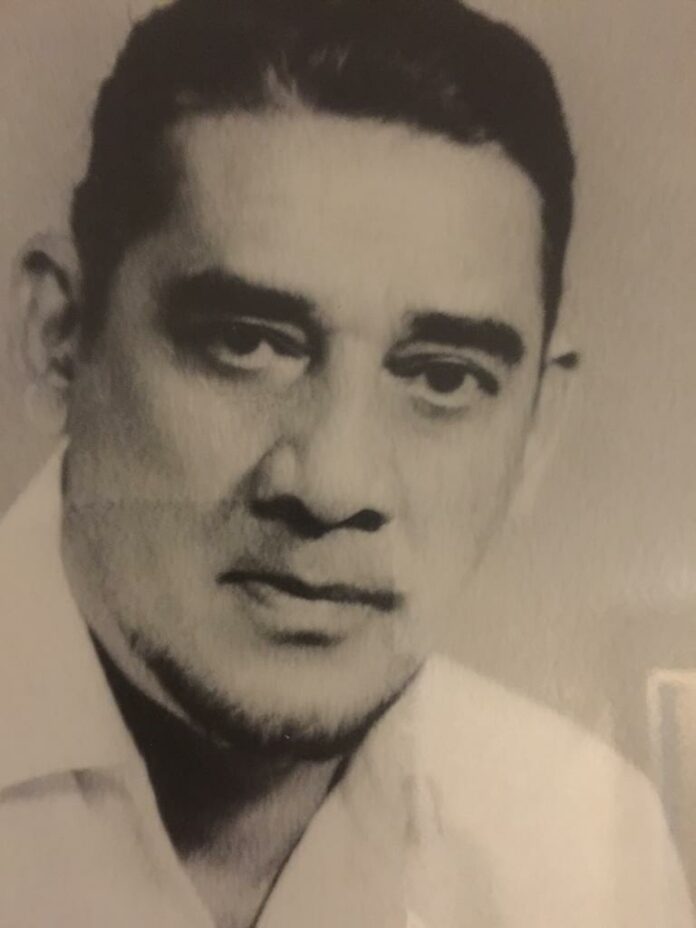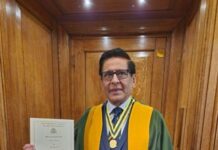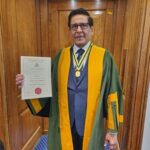A wonderful series of videos has emerged, relating the story of a father figure of AFED.
Haji Gulamabbas Kassamali Haji Bahadurali Mawji died in 1970, but his thoughts live on in these films.
In them, Ahmed Bhai Jaffer, father of councillor Sh Safder Jaffer, gives a precious insight into his life.
This priceless archive footage is likely to prompt huge interest in the Khoja community.
To provide some context, the following information about the life of Gulamabbas Mawji comes from a report written by Alhajj Ahmed Bhai Ali Mohamed Jaffer Sheriff Dewji on the subject of Personalities of Mombasa. It was presented at a World Federation event many year ago.
Greetings for all
“A tall and lean person clad in a long coat and a cap or wearing a short-sleeved shirt and dishevelled hair could be seen taking long strides in the streets of Mombasa greeting young and old, rich and poor, black and white, all with a gentle smile on his lips but giving the look of a person who was in a hurry to meet a deadline to complete some important task.
“Gulamabbas Kassamali Haji Bahadurali Mawji was always seen moving around in the corridors of schools, hospitals, clinics and mental asylums; frequenting police stations, law courts and prisons; and visiting business houses and private homes and his very appearance evoked awe and respect.
Champion of the underprivileged
“He was considered to be the champion of the causes of the underprivileged or the leader of the mustazafeen (the oppressed), irrespective as to whether they were Khojas or non-Khojas, Muslims or non-Muslims, white or black and he was held in esteem by the cross section of the community.
“Born in Mombasa in 1919, Haji Gulamabbas had a formal education for only two years. Initially he joined a group of delinquents but realizing his shortcomings, with perseverance he acquired enough knowledge to be able to read, write and speak with fluency in Gujarati and English and he was at ease whilst conversing in Urdu and Kiswahili.
“He also showed deep interest in religious education and developed close friendships with Mulla Mohamed Mulla Jaffer (father of Alhaj Mulla Asghar) and Haji Alibhai M. Gulamhusein (a teacher of Hussayni Night School). On the socio-welfare scene, initially he joined Ithna Asheri Volunteer Corps and later became an active member of the Managing Committees of Ithna Asheri Young Men’s Union (established in 1945) and Mombasa Jamaat.
“As a delegate and councilor representing Mombasa Jamaat, his presence was recognized at the meetings of the Federation of Khoja Shia Ithna Asheri Jamaats of Africa and views and opinions expressed by him in a soft but emphatic tone were given due importance.
Saving delinquents
“From 1960 to his death in 1970 at the age of only 52, he dedicated almost all of his time to serving Faiz-e-Husseini — the then subsidiary body of the Ithna Asheri Young Men’s Union (formed in 1945 to cater for the needs of Hajis, Zuwwar, other travelers, the sick and the poor). In 1966, He initiated the idea of amalgamation of the two Jamaats then in existence in Mombasa.
“He conducted a small business and his office in the old town of Mombasa became the hub of activity during the nights of Mahe Ramadhan, where religious discourses would be held.
“Acquainted with the thinking process of delinquents, he mingled freely with youths who used to run away from schools or leave in class seven, before appearing in the national examination to qualify for admission to secondary schools and roaming aimlessly thereafter.
“He prompted and assisted them to seek employment or learn office skills at commercial colleges, and seek basic religious education.”
Unity and education
This report concluded that Gulamabbas Mawji brought about:
* Unity amongst the people of Mombasa and increasing involvement of the youth in communal development affairs.
* Increase of interest in acquiring both secular and religious education both at local and international level and the resultant developments in the field of education.
The videos above shine an invaluable light on this unforgettable personality.














